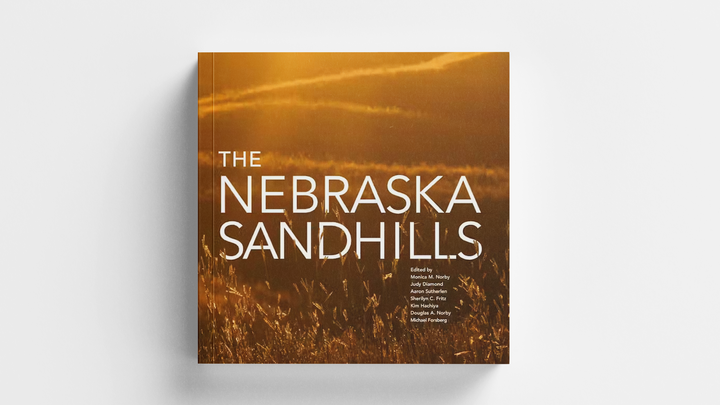When I first encountered the Sandhills after moving to Nebraska the better part of a decade ago, I immediately wished that as a kid I had received a postcard from Valentine or Mullen or Callaway or any of the ranch communities I have been privileged to visit and have come to love. It felt like the center of the world, and I wished I would have realized the magic of this region sooner.
As it was, I had just passed the midcentury mark when I first set off for the Sandhills on a frigid December morning. The shift in landscape on that drive was subtle at first, starting in a place that reminded me of Ohio and Indiana before the trees became fewer, the center pivots more uniform, and the air more crisp and less humid. And as I crossed the Kingsley Dam, the fog from Lake McConaughy lifting, I realized that I was enveloped by Nebraska’s famous sea of grass, a place unlike anywhere I had ever visited—majestic, mysterious, and incredible, even on a frigid winter day.
The Sandhills are a vast landscape; the region comprises more than 19,300 square miles. Yet the Nebraskans who live in this working agricultural landscape form a tight-knit community, drawn together by the region’s beauty, the breadth and reach of the cattle industry, and the joys and challenges of living in one of the least populated places and most diverse ecosystems in the world.
Sandhills communities are surrounded by rolling sand dunes stabilized by grass and intersected by winding rivers atop one of the world’s largest freshwater aquifers, the Ogallala—or High Plains—Aquifer. The Nebraska Sandhills are part of the expansive Great Plains of North America on par with the Pampas of South America, the Steppes of Central Eurasia, and the Savannas of Africa.
Nebraska’s Sandhills livestock—bison, horses, and sheep, but mostly cattle—graze these grass-covered dunes that also support a vast array of plant, animal, and microbial life. Cattle form the backbone of the region and the state’s largest industry, which of course is agriculture. Nebraska is the Beef State, and the Sandhills are Cattle Country.
But the region is so much more, and The Nebraska Sandhills captures its breadth and complexity. Chapters explore the geology, ecology, climate, and vast water resources of the Sandhills. The Nebraska Sandhills celebrates the uniqueness of the life the region nurtures, including blowout penstemon, an endangered flowering plant once thought to be extinct that thrives in loose sandy pockets of Earth the wind has made uninhabitable to other plants. It details the rich cultural heritage of the Native Americans who have lived in harmony with this vast and life-sustaining landscape since long before there was a Nebraska. It chronicles the arrival of the homesteaders, immigrants, and cowboys who followed, and it provides a glimpse into the lives of some of the Nebraskans who live there today. One essay in this book captures the unique rhythm of life on a working ranch through all four seasons. Another looks at a quite different aspect of the Sandhills—the tourism generated by the region’s remote, pristine, world-class golf courses.
This book, I hope, is the postcard I never received, a collection of all the reasons this unique area is worth visiting, worth understanding, and worth conserving for future generations. In 2022 we celebrated the College of Agricultural Sciences and Natural Resources’ 150 years of impact. And 2023 marked the fiftieth anniversary of the founding of the Institute of Agriculture and Natural Resources (IANR) at the University of Nebraska–Lincoln. The Nebraska Sandhills is a postcard from IANR to you, the reader, in celebration of these important milestones and in celebration of this special place that feels like the center of the world.
